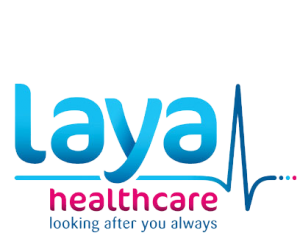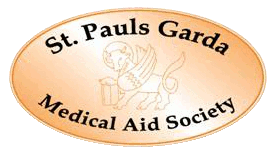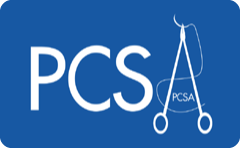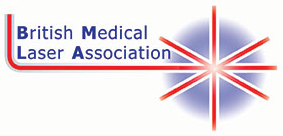 Download this information as a PDF
Download this information as a PDF
Basal cell carcinoma is also known as BCC or rodent ulcer. Basal cell carcinoma is the most common type of cancer in humans and is particularly prevalent in the Australia and New Zealand. Luckily, this form of skin cancer is very rarely a threat to life.
Who is prone to basal cell carcinoma?
BCC typically affects adults of fair complexion who have had a lot of sun exposure, or repeated episodes of sunburn. Although more common in the elderly, sun-loving New Zealanders frequently develop them in their early 40s and sometimes younger. The tendency to develop BCC may be inherited, and is a particular problem for families with basal cell naevus syndrome (Gorlin syndrome) or Bazex syndrome.
Types of basal cell carcinoma
BCCs arise in otherwise normal appearing skin, unlike squamous cell carcinomas (SCCs), which often arise within pre-existing solar keratoses. They usually grow slowly over months or years so they can vary in size from a few millimetres to several centimetres in diameter. There are several different clinical types.
Nodular BCC
- Most common type on the face
- Small, shiny, skin coloured or pinkish lump
- Blood vessels cross its surface
- May have a central ulcer so its edges appear rolled
- Often bleeds spontaneously then seem to heal over
- Cystic BCC is soft, with jelly‐like contents
- Rodent ulcer is an open sore
- Micronodular and microcystic types may infiltrate deeply
Superficial BCC
- Often multiple
- Upper trunk and shoulders, or anywhere
- Pink or red scaly irregular plaques
- Slowly grow over months or years
- Bleed or ulcerate easily
Morphoeic BCC
- Also known as sclerosing BCC
- Usually found in mid‐facial sites
- Skin‐coloured, waxy, scar‐like
- Prone to recur after treatment
- May infiltrate cutaneous nerves (perineural spread)
Pigmented BCC
- Brown, blue or greyish lesion
- Nodular or superficial histology
- May resemble melanoma
Basisquamous BCC
- Mixed basal cell carcinoma (BCC) and squamous cell carcinoma (SCC)
- Potentially more aggressive than other forms of BCC
Treatment of BCC
The treatment for a BCC depends on its type, size and location, the number to be treated, and the preference or expertise of the doctor. Possibilities include:
Superficial skin surgery
Shave, curettage, & cautery (and other types of minor surgery). Many small, well-defined nodular or superficial BCCs can be successfully removed by removing just the top layers of the skin. The wound usually heals within a few weeks without needing stitches.
Excision biopsy
Excision means the lesion is cut out and the skin stitched up. This is the most appropriate treatment for nodular, infiltrative and morphoeic BCCs. Very large lesions may require a flap or skin graft to repair the defect after excision.
Mohs micrographically controlled excision
Mohs micrographically controlled excision is a technique used for BCCs growing in high risk areas of the face around the eyes and nose. Ill-defined, morphoeic and recurrent BCCs are also best removed by a dermatologic surgeon by the Mohs technique. This involves examining the carefully marked excised tissue under the microscope while the patient is still in the operating suite, layer by layer. It may take several slices until the tumour has been completely removed. The defect is often much bigger than the BCC appeared to be before surgery because of hidden extensions of tumour cells under the skin.
Photodynamic therapy
Photodynamic therapy (PDT) refers to a technique in which the tumour is treated with a photosensitising chemical in a cream (e.g. Metvix) or lotion, and exposed to light several hours later. Up to 85% superficial BCCs are cured by PDT, with excellent cosmetic results. It is less successful for other types of BCC and is best avoided if the tumour is in a high risk site.
Imiquimod cream
Imiquimod is an immune response modifier. The cream is applied to superficial BCCs three to five times each week, for six to sixteen weeks. The imiquimod results in an inflammatory reaction, maximal at three weeks. Up to 85% of suitable BCCs disappear, with minimal scarring.
Cryotherapy
Cryotherapy is the treatment of a superficial skin lesion by freezing it. Dermatologists sometimes treat small superficial BCCs with liquid nitrogen, using a special double freeze-thaw technique. A blister forms, crusts over and heals within several weeks. A permanent white mark usually results from this treatment, but it is inexpensive and may be very suitable for lesions in covered sites.
Radiotherapy
Radiotherapy refers to X-ray treatment, and is less commonly used to treat BCCs than in the past. It may be suitable for skin cancers on the face in the elderly. The best cosmetic results are achieved using multiple fractions, e.g. once-weekly treatments for several weeks.
What happens after treatment?
Whatever the chosen treatment, BCC can nearly always be cured.
- BCCs occasionally recur at the same site, but they can be treated again by the same or a different method. The highest cure rates are obtained by Mohs surgery.
- Metatatic BCC refers to BCC that has spread to the lymph glands and other organs. It is extremely rare but may be ultimately fatal.
Patients with BCC are at increased risk of developing further BCCs. They are also at increased risk of other skin cancers, especially melanoma. Arrange a complete skin examination from time to time. Ask your dermatologist or GP to check any persisting or growing lumps or sores or otherwise odd-looking skin lesions. Early detection means easier treatment, and less scarring. Protect your skin from excessive exposure to the sun. Stay indoors or under the shade in the middle of the day. Wear covering clothing. Apply broad spectrum sunscreens to exposed skin if you are outdoors for prolonged periods, especially during the summer months.














